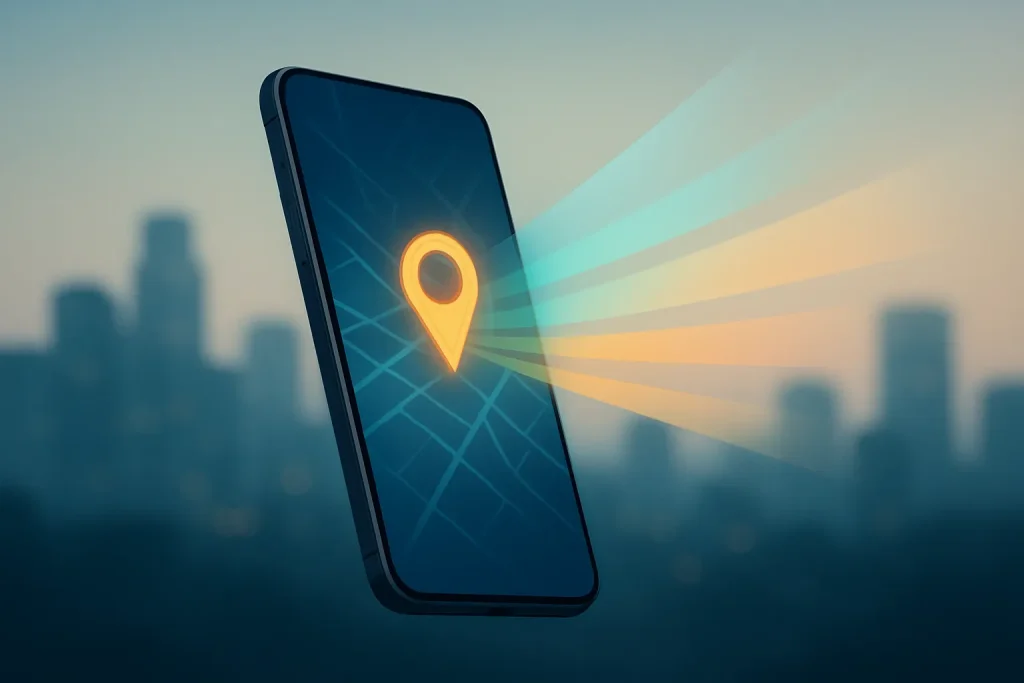Discover how artificial intelligence is revolutionizing the way we travel. This article explores cutting-edge AI tools that provide invaluable in-destination assistance, from real-time translation to personalized recommendations. Drawing on insights from industry experts, learn how these innovative technologies can enhance your travel experience and make your journeys smoother and more enjoyable.
- Google Translate Enhances Cultural Immersion
- Live Translation Apps Foster Meaningful Connections
- Google Lens Serves as Pocket Translator
- AI Flight Tracking Optimizes Airport Pickups
- Digital Concierge Personalizes Guest Experience
- Apple Maps Predicts Optimal Travel Times
- Google Lens Bridges Language and Context Gaps
- TripIt Streamlines Travel with Real-Time Updates
- AI-Powered Navigation Apps Simplify Urban Exploration
- Google Lens Overcomes Language Barriers Abroad
- ChatGPT Curates Local Restaurant Recommendations
- Google Maps Live View Eases City Navigation
Google Translate Enhances Cultural Immersion
Google Translate’s camera feature, while not an AI app, is built on Google’s own AI tools, and was invaluable during our recent Morocco trip.
Picture this: I’m standing in the bustling souks of Marrakech with a group of women travelers, and we’re completely lost trying to decipher Arabic price tags and ingredient lists. Instead of fumbling through phrasebooks or awkwardly pointing, I simply opened Google Translate, pointed my phone camera at the text, and instantly got real-time translations overlaid on my screen. It was like having a personal interpreter in my pocket.
What made this particularly valuable wasn’t just reading menus or signs. In Fes, one of our travelers used it to translate a handwritten note from a local artisan explaining the traditional techniques behind his pottery. Suddenly, what could have been just another shopping stop became a genuine cultural exchange. The artisan was thrilled that we could understand his craft story, and our traveler gained insight she never would have accessed otherwise.
The camera translation also proved invaluable for safety and navigation. Reading street signs, understanding transportation schedules, and even translating medication labels at a local pharmacy when one traveler needed basic pain relief became effortless.
My advice: download the language pack before you travel so it works offline. Nothing is worse than needing translation help when you have spotty internet in remote locations. I’ve found it particularly useful in destinations where English isn’t widely spoken, transforming potentially frustrating moments into opportunities for deeper cultural understanding.
This technology has genuinely changed how our groups experience destinations, making us more confident explorers and better cultural ambassadors.
 Katherine Butler-Dines
Katherine Butler-Dines
CEO, Women Travel Abroad
Live Translation Apps Foster Meaningful Connections
I’ve witnessed the transformative power of live translation apps in conversation mode. These tools have revolutionized the way our travelers connect with local communities during cultural immersion experiences. When our travelers use the conversation feature in Google Translate on market tours in Seoul or cooking classes in Naples, they can interact directly with elderly vendors and family chefs. These locals offer personal anecdotes and traditional techniques that were previously inaccessible due to language barriers.
A specific example involves a pair of Toronto residents who formed lifelong friendships with a Roman pasta maker. By employing live translation, they were able to discuss three generations’ worth of family recipes, which led to an invitation to return for holiday celebrations.
This technology is effective because it bridges communication gaps without diminishing human connection. It encourages rich cultural experiences where conversation is open, allowing travelers and locals to share local nuances and personal stories that give a community its character. The conversation mode functions like a natural back-and-forth, enabling guests to inquire about family traditions, local history, and cultural insights — conversations that our guides strive to translate but may not always be able to do in real-time.
We need AI tools that facilitate real encounters rather than replace them — tools that deepen meaningful cultural exchange. With smart glasses and translation technology, travelers can chat with local artisans, market vendors, or community members who possess authentic cultural knowledge but may not be fluent in the traveler’s language.
 Yunna Takeuchi
Yunna Takeuchi
Co-Founder & Cxo, City Unscripted
Google Lens Serves as Pocket Translator
When it comes to in-destination travel assistance, my preferred AI-powered solution is using Google Lens as a combination pocket translator and tour guide.
Here’s how it works: imagine you’re walking through a market in Kyoto or perusing a French restaurant menu, unsure of what “ris de veau” means. Simply open Google Lens, point your camera, and voila — it translates the text live on your screen in context. Not only do you get the translation, but it overlays it like augmented reality (AR), maintaining a natural feel. This feature alone has saved me from ordering questionable dishes on multiple occasions (I learned the hard way once with “tête de veau”… never again).
As a bonus, it’s also excellent for identifying landmarks or art pieces on the spot without having to awkwardly Google phrases like “fountain statue near cathedral with bird.” AI’s visual recognition saves time and keeps the trip immersive. It’s like having a travel companion who’s fluent in every language and knowledgeable enough to know every piece of history around you.
This is the kind of technology that transforms AI into an actual travel companion, not just a tool.
 Daniel Haiem
Daniel Haiem
CEO, App Makers LA
AI Flight Tracking Optimizes Airport Pickups
We utilize AI-based flight tracking to automatically adapt our drivers’ airport pick-up time, and it’s been a real game-changer. There are fewer late arrivals, zero unnecessary waiting, and a 28% decrease in no-show fees. We leverage an AI tool that accesses real-time flight data (we integrate FlightAware via API) to determine the latest estimated arrival time for every flight and automatically insert that time into our dispatch system. This way, instead of having to guess or wait for clients to report delays, the drivers receive real-time updates and shift only when necessary. This technology is incredibly useful at big airports such as AICM, where delays and gate changes occur regularly. For high-end clients, peace of mind begins when they land after the long flight, and the driver with the sign is already at the right spot at the right time.
 Martin Weidemann
Martin Weidemann
Owner, Mexico-City-Private-Driver.com
Digital Concierge Personalizes Guest Experience
Focused around personalization, ChatGPT as a digital concierge has been my most loved use case of AI. The tool has been styled as a type of virtual concierge that can be interacted with through an SMS, WhatsApp, or in-app messenger service available from their rental provider. It is compelling because it bridges the gap between the personalized hospitality guests are demanding and the scale that STR managers are going to require.
Instead of making guests sort through a printed binder or find an extremely outdated welcome email, they can ask about things like, “What’s the local secret for Sunday brunch around here?” or, “Can I get the hot tub to work?” and get instant, local contextual, conversational answers around the clock. And, they can get as granular as necessary — from translating dietary restrictions to a local language before you dine in another country (something for which human hosts might not always be prepared to accommodate so quickly or consistently).
An AI chatbot that we integrated just last week with a high-volume property manager (dozens of Maui listings) provides a great example. The real-time tidbits on local farmers’ markets, beach safety updates, and last-minute activity recommendations a click away (without the need to wait for a call back) were popular with guests. The host team’s load was also decreased significantly during the busy season, and guest satisfaction scores rose dramatically. This is the magic of coupling regional experience with AI reach.
 Kristina Bronitsky
Kristina Bronitsky
Director of Consumer Marketing, RedAwning
Apple Maps Predicts Optimal Travel Times
As a frequent traveler managing client meetings and industry conferences, the AI feature I rely on most is Apple Maps’ real-time traffic predictions and route optimization.
What makes it particularly useful isn’t just avoiding traffic — it’s how the AI learns from my travel patterns and suggests departure times based on my calendar appointments. The specific feature that’s been most helpful is the proactive notifications that say, “Leave by 2:15 PM to arrive on time for your 3:00 meeting.”
The AI considers current traffic conditions, historical data for that route and time, and even factors in walking time from parking to the actual meeting location. This level of contextual intelligence has become essential when I’m traveling between client sites for on-site troubleshooting consultations.
From my software engineering perspective, what’s impressive is how Apple Maps integrates with calendar data to provide contextual suggestions rather than just responding to manual route requests. It anticipates travel needs based on my schedule rather than waiting for me to actively plan routes.
During busy conference seasons when I’m visiting multiple cities, the AI’s ability to learn my preferences — like avoiding toll roads or preferring certain types of routes — saves significant mental energy. I can focus on technical preparations rather than logistics planning.
The predictive element works best because it solves problems before I realize I have them. Instead of scrambling to check travel time before leaving, the system proactively manages my departure timing.
Practical AI beats sophisticated AI when it solves real daily problems without requiring active management.
 Nikolay Petrov
Nikolay Petrov
Chief Technology Officer | Founder, ZontSound
Google Lens Bridges Language and Context Gaps
Real-time translation and visual discovery using Google Lens is one of my favorite features of AI as an in-destination travel helper. Whether it’s traversing street signs in Tokyo, reading a menu in back-country Vietnam, or touring a historic site with no English language traces, Google Lens serves to bring me a step closer to bridging the language and contextual gap immediately.
It is so handy when you need to read information related to public transportation, grasp references to ingredients of local food, or even be able to recognize landmarks out and about. It turns my phone camera into my travel assistant, making my trip more spontaneous and safe, plus it helps in countries where English is not widely spoken. I have saved countless hours with the help of this simple tool, and any destination seems to be a little more accessible.
 Sushant Yadav
Sushant Yadav
Co-Founder, Travelosei
TripIt Streamlines Travel with Real-Time Updates
My favorite way to use AI for in-destination travel assistance is through the app TripIt. It automatically organizes all my travel details — flights, accommodations, and activities — into a neat itinerary. The AI-powered feature I find most helpful is the real-time flight tracking and alert system. For example, on my recent trip to Paris, the app notified me immediately when my flight was delayed and adjusted my itinerary accordingly, including updated directions to the airport and my hotel. This saved me time and stress. It also recommends nearby restaurants or activities based on my location, making spontaneous decisions much easier. This level of convenience, powered by AI, really enhances my travel experience, allowing me to focus on enjoying the trip rather than managing the logistics.
 Nikita Sherbina
Nikita Sherbina
Co-Founder & CEO, AIScreen
AI-Powered Navigation Apps Simplify Urban Exploration
Google Maps is my go-to AI-powered tool for in-destination assistance. I prefer traveling like a local, and Google Maps allows me to visualize my route and understand the area I’m exploring. It’s been a lifesaver when I’ve gotten lost in unfamiliar places.
For urban destinations, I also rely heavily on Citymapper, an AI-powered navigation app that excels at multimodal transportation planning. The app suggests the quickest and most cost-effective way to get around a city. What I really like about Citymapper is its real-time updates on delays, service changes, and local route options. This helps me when I’m navigating complex transit systems in cities where I’m unfamiliar with their transit network. Together, these AI tools assist with potentially stressful navigation issues and turn them into seamless travel experiences for me.
 Camiel Duff
Camiel Duff
Founder, Ellusive & Co Inc.
Google Lens Overcomes Language Barriers Abroad
I apply AI in-destination travel with the help of Google Lens, i.e., live translation and visual recognition capabilities. I have applied it countless times in cities such as Tokyo, Bucharest, or in southern Italy where signs or menus are not accompanied by English language translations. Although it is convenient to hold my phone up to a street sign or a handwritten restaurant chalkboard and have it instantly translated, it is not only convenient but also serves to avoid errors such as getting on the wrong train or ordering something that is absolutely forbidden.
A combination of the OCR and neural machine translation layers work together so fast and accurately that, as an engineer, I appreciate it. It is not a word-for-word translation; it reads structure and context, which is everything when it comes to navigating unknown systems.
The mere fact that it instills that small measure of confidence in a foreign environment can save hours. It is not flashy; however, it is stable, expandable, and practically useful. This is how good AI is supposed to be: absent of hype, just do.
 Mircea Dima
Mircea Dima
CTO / Software Engineer, AlgoCademy
ChatGPT Curates Local Restaurant Recommendations
Something I’ve tried is asking ChatGPT for recommendations for restaurants based on user reviews online. I like eating at local restaurants when traveling, and it can sometimes take a lot of time to find places by manually looking through reviews online. Using AI in this way can help narrow the search.
 Steve Schwab
Steve Schwab
CEO, Casago
Google Maps Live View Eases City Navigation
I am a fan of the Live View function in Google Maps’ AI-based setup when it comes to exploring new cities. What this does is put the directions right at your disposal via your phone’s camera, which in turn makes it a piece of cake to get around in unknown areas. Also, it is very helpful when I am groggy from jet lag or running on a tight schedule!
 Spencergarret Fernandez
Spencergarret Fernandez
SEO and Smo Specialist, Web Development, Founder & CEO, SEO Echelon







